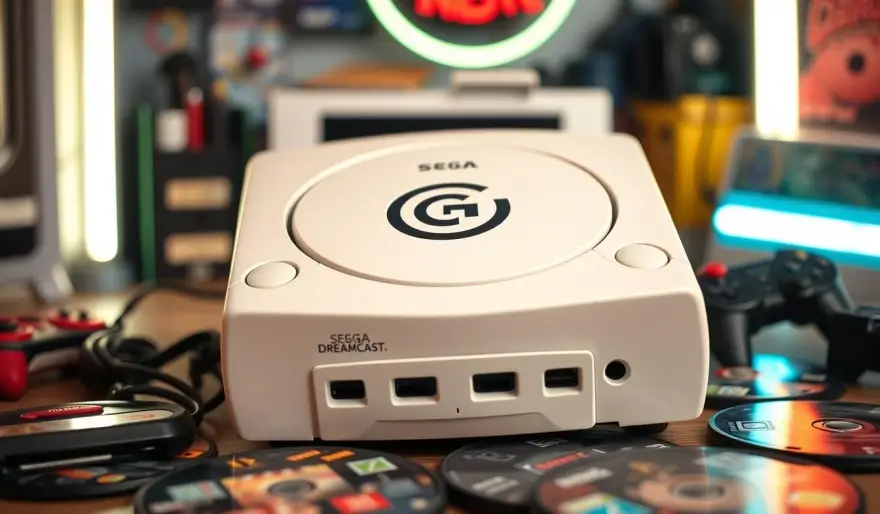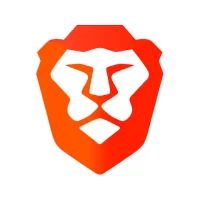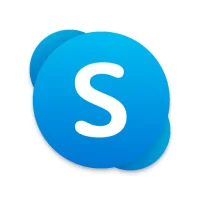The Legacy of Sega: Its Rise, Fall, and Impact on Gaming History
38 min read Discover the fascinating story of Sega's evolution from an arcade pioneer to a gaming giant, and learn how this iconic company shaped the video game industry we know today - written by Jay sanchez , Senior Content Marketer December 01, 2024 08:19
Sega is a name that shines in the video game world. It started with slot machines and quickly became a big player in console wars. Sega's journey is filled with innovation, tough competition, and a lasting impact on gamers everywhere.
Sega was a leader in the 20th century's video game boom. It introduced the Sega Genesis, which shook Nintendo's hold. Later, the Dreamcast showed the world what was possible in gaming.
But Sega faced big challenges too. Its fast rise was followed by a steep fall. It had to adapt from making hardware to focusing on software. Yet, Sega kept innovating and finding new ways to succeed.
Today, Sega's mark on gaming is still felt. Its famous characters and franchises are part of gaming history. We'll explore Sega's highs and lows, its lessons, and its lasting influence on video games.
Key Takeaways
- Sega's journey from a slot machine manufacturer to a pioneering force in the video game industry
- The company's iconic console, the Sega Genesis, and its challenge to Nintendo's dominance
- Sega's groundbreaking innovations, including the Dreamcast console
- Sega's transition from a hardware manufacturer to a software developer
- Sega's enduring legacy and influence on the gaming industry
The Origins of Sega: From Slot Machines to Gaming Pioneer
Sega started in the coin-operated slot machine business, not video games. It was founded in 1940 as Service Games. The goal was to entertain military personnel with these machines. David Rosen led Sega on a path that changed the gaming world.
Service Games: The Early Years
At first, Service Games focused on slot machines for American servicemen. This early work in coin-operated games was key to Sega's later success.
Transition to Electronic Gaming
By the 1960s, Sega saw the future in electronic games. They started making their own coin-operated games. This move was the start of Sega becoming a leader in gaming.
First Steps in Console Development
- In 1983, Sega launched the Sega SG-1000, its first home console.
- The SG-1000 aimed to challenge Nintendo's dominance, setting Sega up for success.
- This early effort helped Sega become a major player in gaming, leading to the Genesis/Mega Drive and Sonic the Hedgehog.
Sega's start as Service Games and its move to electronic gaming under David Rosen were crucial. The Sega SG-1000 was a key moment in Sega's rise to industry leader.
Sega's Golden Age: The Genesis/Mega Drive Era
In the 1990s, Sega hit a high point with its 16-bit console, the Genesis (Mega Drive outside North America). This console, with "blast processing," challenged Nintendo's dominance. It started the famous "console wars" between Sega and Nintendo.
Tom Kalinske led Sega's comeback. He ran a bold campaign that made the Sega Genesis seem cooler and more advanced than the Super Nintendo. His plan, with great games and tech, made the Genesis a top choice in North America.
| Feature | Sega Genesis | Super Nintendo |
|---|---|---|
| Processor | Motorola 68000 (7.6 MHz) | Ricoh 65C816 (3.58 MHz) |
| Graphics | Can show 61 colors at once, with 320x224 pixels. | Can show 32,768 colors at once, with 256x224 pixels. |
| Sound | Yamaha YM2612 6-channel FM synthesizer | Sony SPC700 8-channel ADPCM audio |
The Sega Genesis had amazing games like Sonic the Hedgehog and Altered Beast. These, along with Sega's marketing, made the Genesis a strong rival in the 16-bit war.
"The Genesis is not just a game console, it's a whole new way to play."
Sega's "blast processing" campaign showed the Genesis's fast gameplay. This appealed to gamers and made the Genesis a top choice. Sega's focus on new games and tech made it a legend of the 16-bit era.
Sonic the Hedgehog: Creating a Gaming Icon
The creation of Sonic the Hedgehog, Sega's beloved mascot character, was a key moment in gaming history. Led by Yuji Naka, the Sonic Team aimed to make a platformer game that could compete with Nintendo's Mario series. Their work created an unforgettable hero and changed gaming forever.
Birth of the Blue Blur
In 1991, the Sonic Team, led by Yuji Naka, wanted to create a new mascot character for gamers worldwide. They were inspired by speed and the fast pace of life. So, they created Sonic the Hedgehog, a character that could run through levels with unmatched speed and grace.
Impact on Gaming Culture
Sonic the Hedgehog's introduction was more than a new game; it was a cultural shift. Sonic's charm, fast gameplay, and striking looks won over fans everywhere. His popularity grew, leading to merchandise, animated shows, and a movie. Sonic's influence on gaming was huge, challenging Nintendo's Mario and pushing platformer games forward.
Sonic's Evolution Through the Years
- The original Sonic the Hedgehog game, released in 1991, launched Sonic's fame.
- Over time, the Sonic Team has updated Sonic, adding new mechanics, visuals, and experiences.
- From Sonic Adventure to Sonic Colors and Sonic Mania, Sonic has kept up with trends, winning new fans.
Sonic the Hedgehog's impact as a gaming icon is clear. Thanks to the Sonic Team and Yuji Naka, Sonic has become a gaming symbol. As Sonic evolves, his influence on gaming will last for many years.
Console Wars: Nintendo vs Sega
The 1990s saw a fierce market competition between Nintendo and Sega. This gaming rivalry was fueled by creative advertising campaigns and new tech. It changed the console market forever.
Sega's Genesis, later known as the Mega Drive, challenged Nintendo's dominance. It had powerful hardware and hits like Sonic the Hedgehog. The two companies fought hard for market share, using bold advertising campaigns to win gamers over.
Nintendo countered with the Super Nintendo, offering better graphics and a wide game library. The two consoles gave different gaming experiences. Gamers were torn, often choosing sides and defending their console.
The battle between Sega and Nintendo was more than just tech specs. They ran spirited advertising campaigns, taking shots at each other. Sega's "Genesis does what Nintendon't" slogan showed their bold challenge.
This gaming rivalry had a big impact. It sparked a new era of innovation and competition. The wars between Sega and Nintendo set the stage for future market competition and shaped gaming for years to come.
Innovation and Risk: The Sega Saturn Launch
The 32-bit console market was heating up in the mid-1990s. Sony's PlayStation was quickly gaining ground. Sega decided to launch its own 32-bit console, the Sega Saturn, to stay competitive.
Technical Specifications and Features
The Sega Saturn had impressive specs. It had dual SH-2 32-bit RISC CPUs and a powerful 3D graphics system. It also supported CD-ROM technology, aiming to offer a stunning visual experience.
Marketing Missteps and Competition
Sega's marketing for the Saturn launch was controversial. Instead of a planned rollout, they surprised everyone at the 1995 E3 trade show. This caught retailers and consumers off guard, leading to supply shortages.
The sudden launch made the Saturn face off against the Sony PlayStation. The PlayStation had a strong game library and marketing. This made it hard for the Saturn to gain market share.
Notable Games and Exclusives
Despite challenges, the Sega Saturn had notable games. Virtua Fighter, the first 3D fighting game, and Nights into Dreams were favorites. But, the console struggled to keep a steady flow of top titles.
The Sega Saturn's launch and performance were lessons in the video game world. It had great specs and exclusive titles. But, Sega's marketing and strategy mistakes led to its downfall. This paved the way for the Sony PlayStation to become the top 32-bit console.
Dreamcast: Sega's Final Console
In the late 1990s, Sega aimed to regain its gaming industry lead with the Dreamcast. This 128-bit system introduced online gaming and the Visual Memory Unit (VMU). These features were groundbreaking.
The Dreamcast could connect to the internet, offering online gaming through "Sega Net." This was a big step forward in online gaming. It made gaming more connected and social.
The VMU was a key feature of the Dreamcast. It let players save game data and play mini-games on the go. This accessory made gaming more immersive, showing the future of gaming accessories.
Despite its innovative features and great games like Sonic Adventure and Shenmue, the Dreamcast faced tough competition. The PlayStation 2 and Xbox were too strong, leading to its end in 2001.
Though short-lived, the Dreamcast's impact on gaming is still felt. Its online gaming and VMU innovations predicted future gaming advancements. Sega's legacy as a gaming innovator is secure.
| Feature | Description |
|---|---|
| Online Gaming | The Dreamcast was one of the first consoles to offer online gaming capabilities through the Sega Net service, allowing players to compete and connect with others in real-time. |
| Visual Memory Unit (VMU) | The VMU was a unique accessory that allowed players to save game data, view basic information, and even play mini-games on the go, enhancing the overall gaming experience. |
| 128-bit Architecture | The Dreamcast was a 128-bit console, which provided powerful hardware capabilities for the time, enabling advanced graphics and gameplay experiences. |
"The Dreamcast was a true game-changer, with its innovative online features and the VMU setting the stage for the future of gaming. While its lifespan was short, its impact on the industry is undeniable."
Transition to Third-Party Developer
As the gaming world changed, Sega faced a big choice. Once a top maker of gaming systems, they decided to become a third-party software developer. This move started a new chapter for Sega, filled with new partnerships and games for many platforms.
Strategic Shift in Business Model
Sega chose to become a third-party developer because the console market was tough. By focusing on making games, they could use their skills to reach more people. This way, Sega could make games for many platforms.
Partnership with Former Rivals
To make this change, Sega teamed up with old rivals like Nintendo and Microsoft. These partnerships helped Sega make games for different consoles. This ensured that games like Sonic the Hedgehog would keep being loved by new fans.
Sega's move to become a third-party developer was a big step for them. It showed they could change and keep up with the gaming world. With their game-making skills and partnerships, Sega is set to keep making great multiplatform games.
"Sega's shift to a third-party developer allowed us to reach a wider audience and collaborate with industry leaders, ensuring our games would continue to captivate players for years to come."
Sega's Modern Era: Success in Software and Arcades
Sega has grown a lot in recent years. It's not just about consoles anymore. Now, it's a top software developer and a big name in arcades.
The Total War series is a big hit for Sega. It's a strategy game that mixes history with deep gameplay. This series shows Sega's skill in making games that players love.
The Yakuza series is also very popular. It's known for its tough stories, interesting characters, and mix of action and RPG. This series proves Sega's talent in telling stories that players care about.
Sega is still big in arcades too. Its arcade centers, under Sega Sammy Holdings, attract many gamers. These places offer Sega's games and the latest gaming tech for a fun experience.
| Franchise | Key Highlights |
|---|---|
| Total War Series | Acclaimed strategy game franchise, known for its historical accuracy and deep gameplay |
| Yakuza Franchise | Gritty storytelling, captivating characters, and a blend of action-adventure and RPG elements |
| Sega Sammy Holdings (Arcade Centers) | Sega's continued presence in the arcade industry, offering immersive gaming experiences |
Sega keeps growing by focusing on software and arcades. This strategy has made it successful in today's gaming world.
"Sega has always been a pioneer in the gaming industry, and its modern strategy of embracing software development and the arcade experience showcases its adaptability and commitment to innovation."
Legacy and Impact on Gaming Industry
Sega has left a mark on the gaming world that's hard to ignore. Its early work set the stage for how consoles and games are made today. The Sega Genesis, with its 16-bit graphics and sound, made games more real and fun to watch.
Technological Innovations
Sega didn't stop there. They also worked on the Sega CD and the Sega Saturn. The Sega CD brought CD-ROM games, and the Saturn showed off 3D graphics. These steps showed Sega's commitment to making games better.
Cultural Influence
Sega's influence goes beyond tech. Sonic the Hedgehog became a symbol of gaming that everyone knew. The rivalry between Sega and Nintendo in the 90s was exciting for gamers everywhere. Now, Sega's old games are still loved, thanks to the Sega Ages series.
FAQ
What is the history of Sega's origins?
Sega started as Service Games, making slot machines. David Rosen led the shift to electronic games. They made the SG-1000, Sega's first home console, starting their gaming journey.
What made the Sega Genesis/Mega Drive era so successful?
The Genesis/Mega Drive era was Sega's peak. It had great tech, smart marketing, and amazing games. Tom Kalinske's leadership and the "blast processing" campaign helped Sega take on Nintendo.
How did Sonic the Hedgehog become a gaming icon?
Sonic the Hedgehog, made by Yuji Naka and the Sonic Team, became Sega's star. His fast gameplay and impact on gaming made him a beloved icon.
What were the key factors in the console wars between Sega and Nintendo?
Sega and Nintendo's rivalry in the 1990s was intense. It was about marketing, tech, and games. This war changed the gaming world and future consoles.
Why did the Sega Saturn launch strategy fail to gain traction?
The Saturn's surprise launch and marketing mistakes put it in a tough spot. Despite games like Virtua Fighter, Sony's PlayStation won out.
What made the Sega Dreamcast unique, and why did it ultimately fail?
The Dreamcast was ahead with online gaming and the VMU. But, it faced tough competition from the PlayStation 2. This led to its end, ending Sega's console days.
How did Sega's transition to a third-party software developer impact the company?
Becoming a third-party developer helped Sega. It partnered with Nintendo and Microsoft. This shift let Sega focus on games and grow across platforms.
What are some of Sega's notable successes in the modern era?
Sega has thrived as a third-party developer. It's known for Total War and Yakuza. It also stays in the arcade business and adapts to mobile and digital platforms.
How has Sega's legacy and innovations influenced the gaming industry?
Sega's legacy includes tech like "blast processing" and Sonic the Hedgehog. Its history is celebrated through retro gaming and the Sega Ages series.
User Comments (0)
Popular Apps










Editor's Choice









